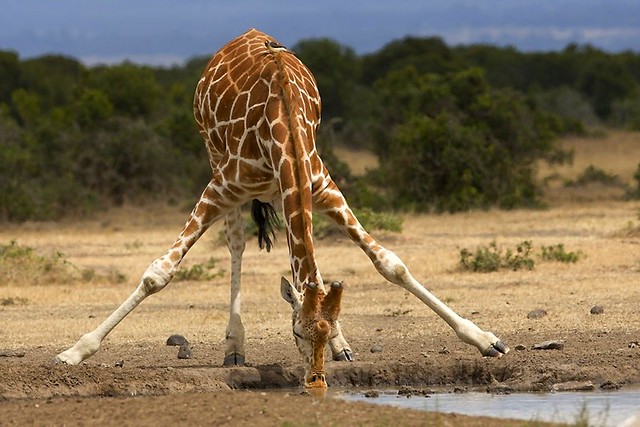One of the most challenging problems this earthly giant must face is the dilemma of pumping enough blood to all extremities of the body. Many studies show that heart mass increases with body mass for mammals (Mitchell and Skinner 2009). This would mean that an increase in mass also means an increase in the number of muscle fibers present. Muscle fibers help contract the heart, pumping blood even to the furthest cavities of the body. The denser the fibers per unit of area, the larger the force that can be exerted. Thus, the size of the giraffes heart aids in generating forces great enough to pump blood to its head, all the way down to its toes.

However, the giraffe’s heart is just one piece to this circulatory marvel. The question still lingers, as to how the blood resists gravity on its travels. How come the blood does not succumb to gravity, falling away from the brain, down the neck, and pooling into the limbs below? We can address this by looking at: 1) the neck structure, and 2) the limb structure.
The neck: As the blood travels up the neck, there is an increase in hydrostatic pressure on the arterial walls (Mitchell and Skinner, 2009). What this means is that the accumulation of blood flowing to the top, is increasing the fluid weight felt by the arterial walls at the bottom of the neck. To account for this, the cells that make up the arteriole wall are larger in size, which increases the walls resistance. This allows for the arterial arteries to push blood up, even with gravity creating such greater hydrostatic pressure. Additionally, the neck contains many one way valves that stops blood from flowing backwards upon every pump of the heart.
The limbs: The structural adaptation of small muscle arteries has allowed the giraffe to develop extraordinary tension in its limbs (Petersen et al., 2013). This tension helps to resist the pressure created by gravity pulling blood down. With the tissue surrounding the limbs having low compliance (meaning, that it recoils back to its original shape fairly easily), the limbs of a giraffe are able to avoid excessive pooling of blood that would otherwise accumulate without these adaptive features.

The final piece to this magnificent marvel, is how in the heck the giraffe resists fainting or receiving a head rush, every time it raised or lowered its head (Mitchell, et al., 2008)? With the amount of blood pumping around, one would think we should see giraffes falling over at the watering hole every time. However, a structure found at the base of the brain in many mammal species aids in preventing such a fate. A net of capillaries called the ‘intracranial carotid rete mirabile’, functions to cool the brain region in addition to equalizing the blood pressure (Fukuta et al. 2007). Talk about an “uplifting” phenomenon!
